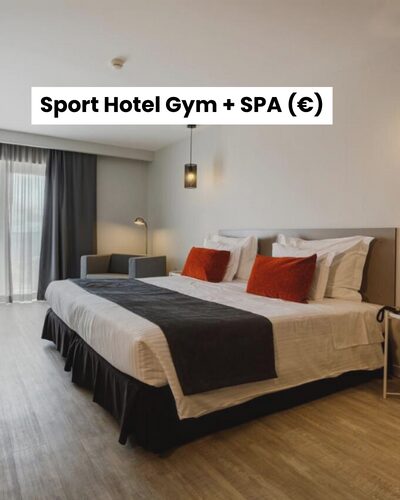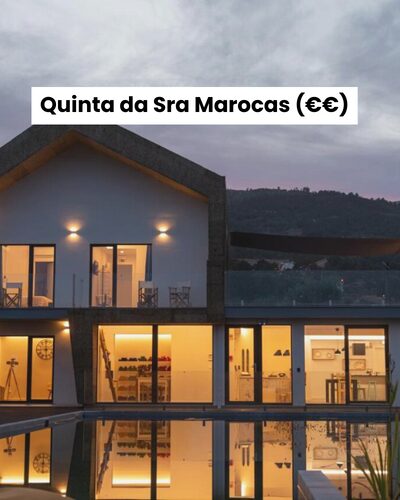Despite being one of the most important cities in one of Portugal’s prettiest regions (Serra da Estrela) and one of its main gateways, Covilhã is often overlooked by many tourists who decide to explore Portugal. So, keep reading to find out what to visit in Covilhã and many other tips.
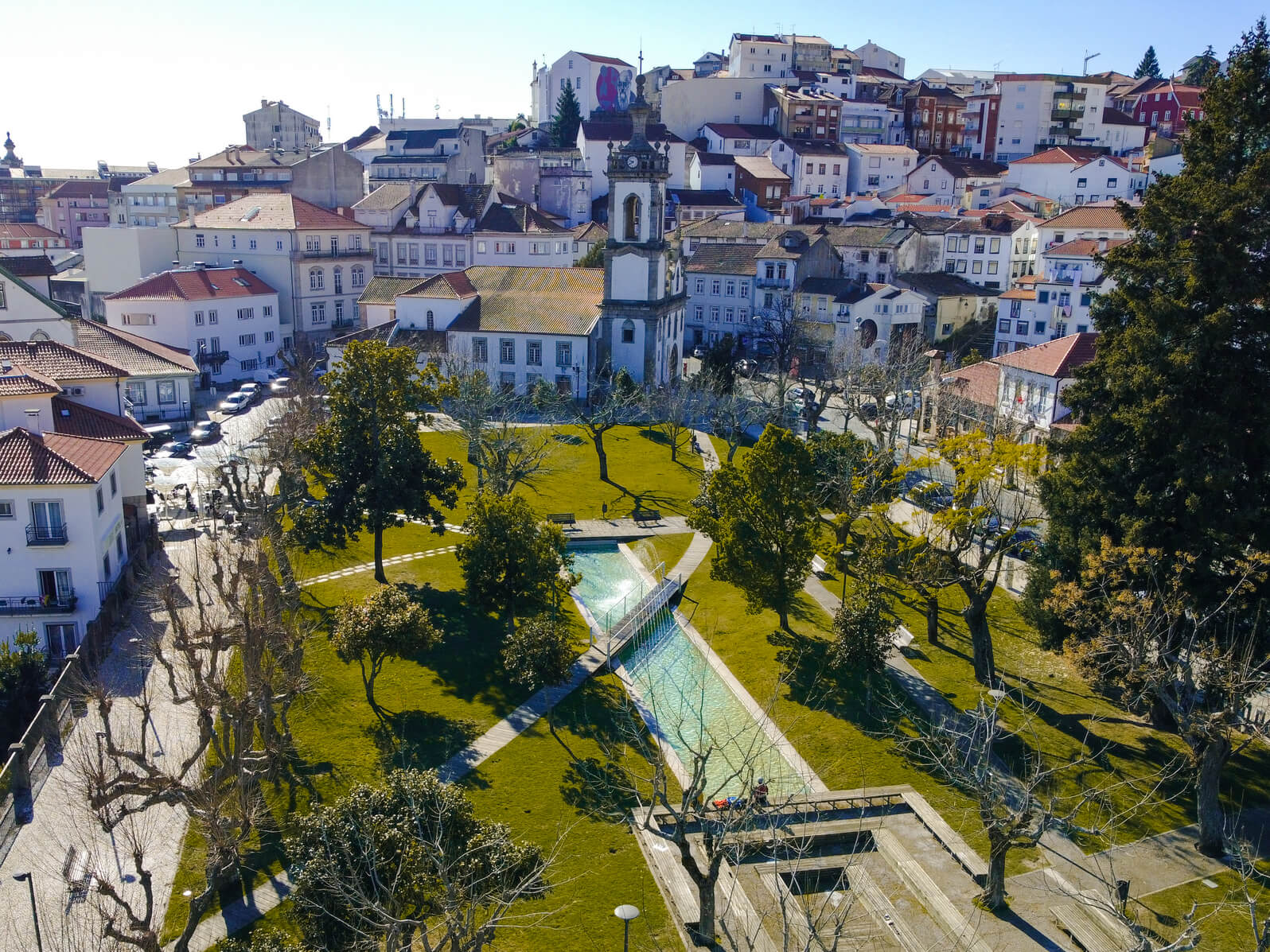
However, even though Covilhã is a relatively small town, there are plenty of reasons to visit it. Firstly, it’s a destination you can visit at any time of year: in winter to look for snow in the highlands or during the summer to enjoy some of the beautiful river beaches nearby.


Covilhã also has a long and vast historical heritage in Portugal. First of all, some men from this city played an important role in the Portuguese maritime exploration. This is the case of the cosmographer José Vizinho, Frei Pedro da Covilhã and the famous Portuguese explorer Pêro da Covilhã. On the other hand, the importance of the city of Covilhã as one of the largest producers of wool in Portugal.


Covilhã currently has one of the most important university centres in the interior of the country (University of Beira Interior), which means that, despite being located in the interior of Portugal, the city has a young and dynamic spirit.
Located in the district of Castelo Branco, visiting Covilhã can be a great excuse to get to know the Beira Baixa region in Portugal and also to take advantage of the many other incredible places that are located nearby.
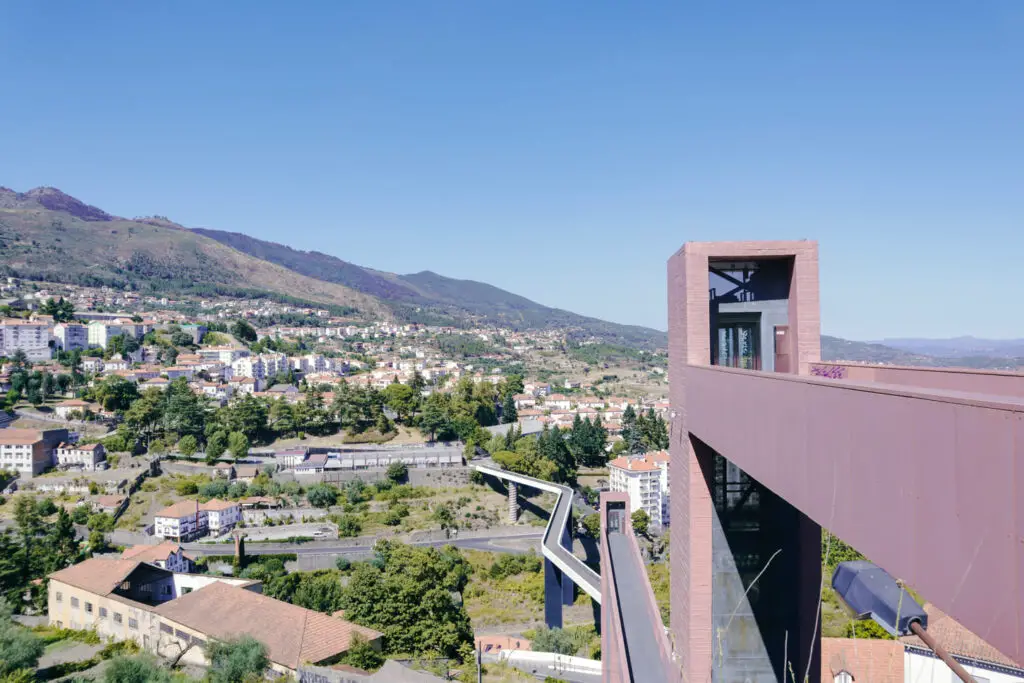
So, throughout this post, you’ll find a summary of the best places to visit in Covilhã, as well as other practical tips for getting to know this Portuguese city, such as:
- Best time of the year to visit Covilhã
- How many days do you need to visit Covilhã
- Hotels in Covilhã
- Restaurants in Covilhã
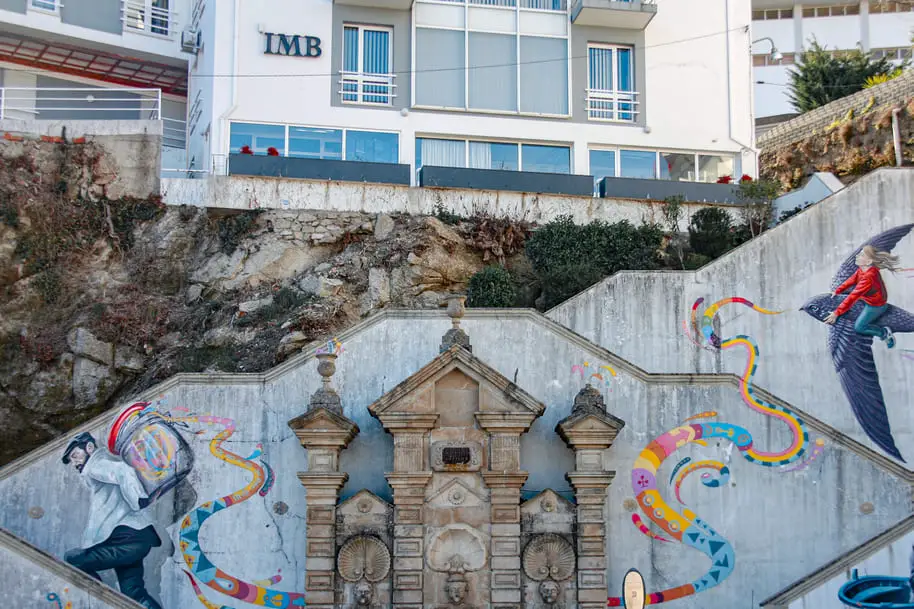
In addition, since Covilhã is strategically located next to Serra da Estrela Natural Park, at the end of the post, I’ll also include several suggestions of places to visit near Covilhã to extend your stay in this region of Portugal.
What are the best months to visit Covilhã?
There’s always an excuse to visit Covilhã. In winter, the hope of seeing Serra da Estrela covered in snow makes many people travel to this region of Portugal. In summer, the higher temperatures and the river beaches with cool water attract just as many tourists.

So, any time of year is a good time to visit Covilhã, depending on what you want for your trip. In any case, Covilhã has very cold winters and hot, dry summers. However, although it usually snows very close to Covilhã, it rarely snows in the city itself, as it’s not located at such high altitudes.
If you want to visit Covilhã when the temperatures are more inviting, then April to June and September and October are the best months to visit Covilhã. I can say that I’ve visited Covilhã in both winter and summer and enjoyed both experiences 😄.
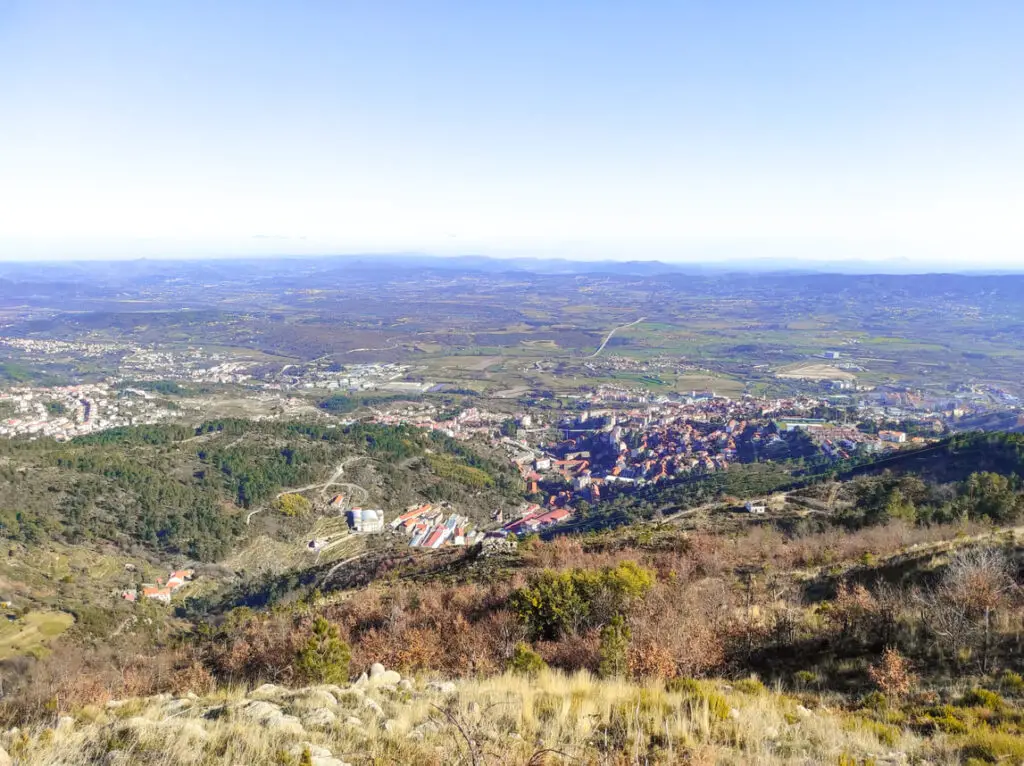
Finally, if you like local festivities, I suggest visiting Covilhã in June and July, which is when the region’s popular saints’ festivities take place. In particular, there’s Feira de São Tiago, which takes place every year in July and can also be an excellent time to visit Covilhã.
How many days do you need to visit Covilhã?
Given the small size of the city, we can visit Covilhã’s main points of interest in one day. However, Covilhã is an excellent gateway to Serra da Estrela and all the fantastic things this Portuguese region has to offer.
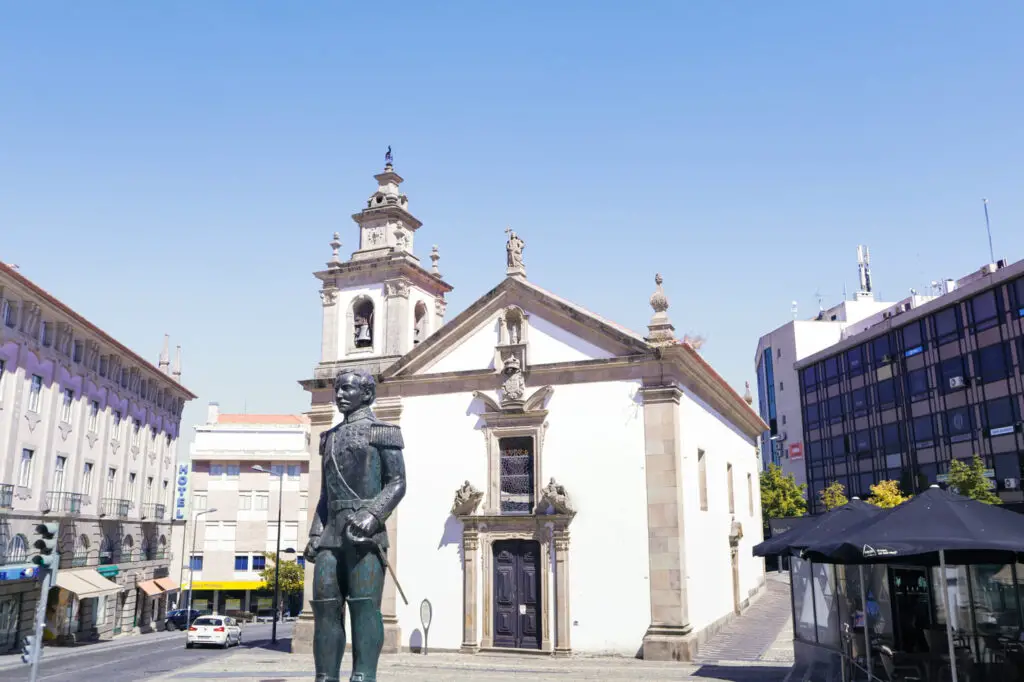
So, I suggest spending at least two days in Covilhã. This will allow you to savour the city itself on one day and take the opportunity to visit other places nearby on the remaining day.
Of course, this itinerary can easily be extended to more days, as many places in Serra da Estrela Natural Park are worth visiting and make excellent day trips from Covilhã.
How to get to Covilhã?
It’s quite easy to reach Covilhã from the main Portuguese cities (Porto, Lisbon) by car. From Porto, it’s about 250 kilometres (2h40) and from Lisbon a bit more – 277 kilometres (3h).
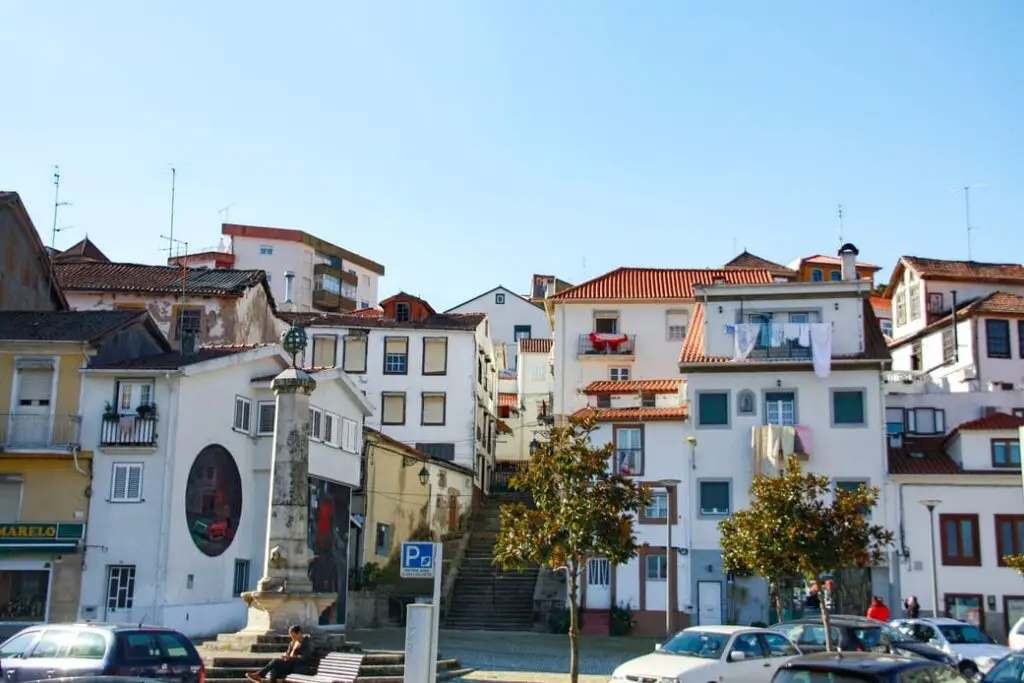
However, for those who don’t have a car, it’s also possible to get to Covilhã using buses or train:
- From Porto: direct buses depart from Campanhã station. The service is run by Rede Expressos, and the journey costs 17.5€ and takes around 3h15
- From Lisboa: Rede Expressos buses from Sete Rios (from 7.9€, taking 3h25), but there are also train options at CP (the shortest option is the Inter-City train).
What’s the best way to explore Covilhã?
Most points of interest in Covilhã are located relatively close together. It is therefore possible to visit the city mostly on foot.
However, if you’d like to explore the surrounding region a little more, having a car is definitely the best option.
💼 TRAVEL INSURANCE: Unexpected events happen anywhere in the world, so I always recommend getting travel insurance. I regularly use Heymondo, which offers some of the highest coverages on the market at very competitive prices. As well as covering medical expenses, Heymondo’s insurance also covers the loss or theft of luggage, electronic equipment and more. They also have a 24/7 customer service through their App. As A Ticket to Take Off reader, you get a 5% discount when purchasing Heymondo insurance. The purchase must be made using this link, and the price shown on the website already includes the discount.
Hotels in Covilhã
When I visited Covilhã, I stayed in a very cosy accommodation – Casa das Muralhas. This accommodation results from a project that aimed to restore an old house in the historic centre of Covilhã.


In addition to its excellent location, the rooms are very spacious and the decor is simple but modern. The interior of the accommodation is very cosy, but so is the exterior, especially in the summer months.
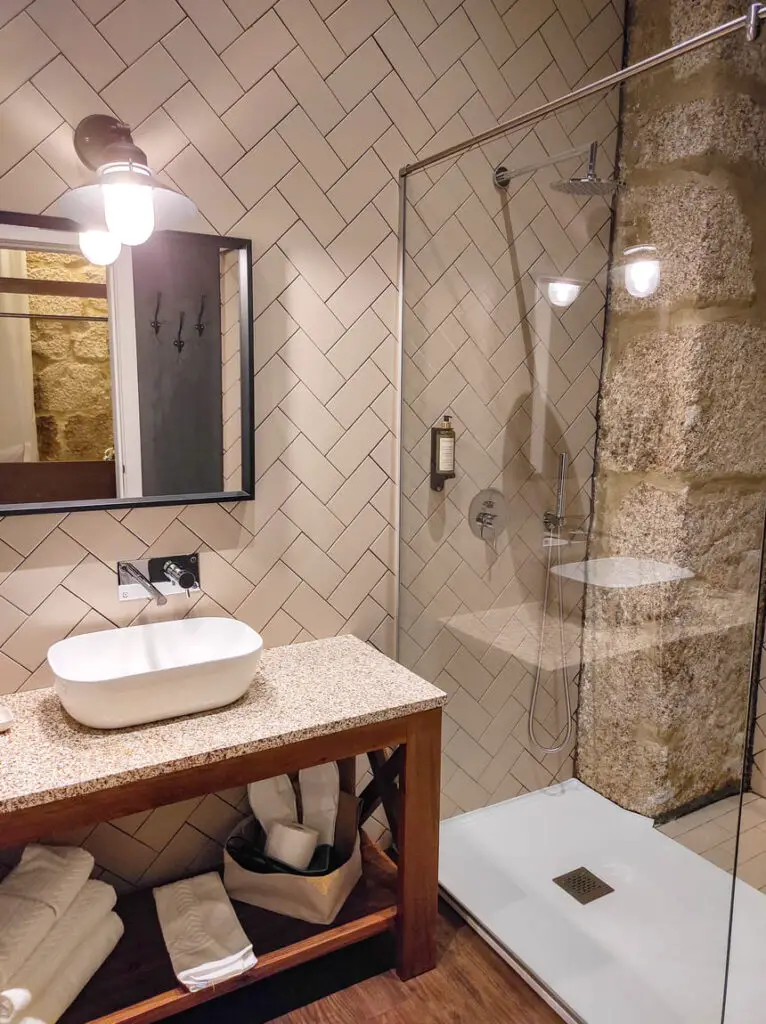
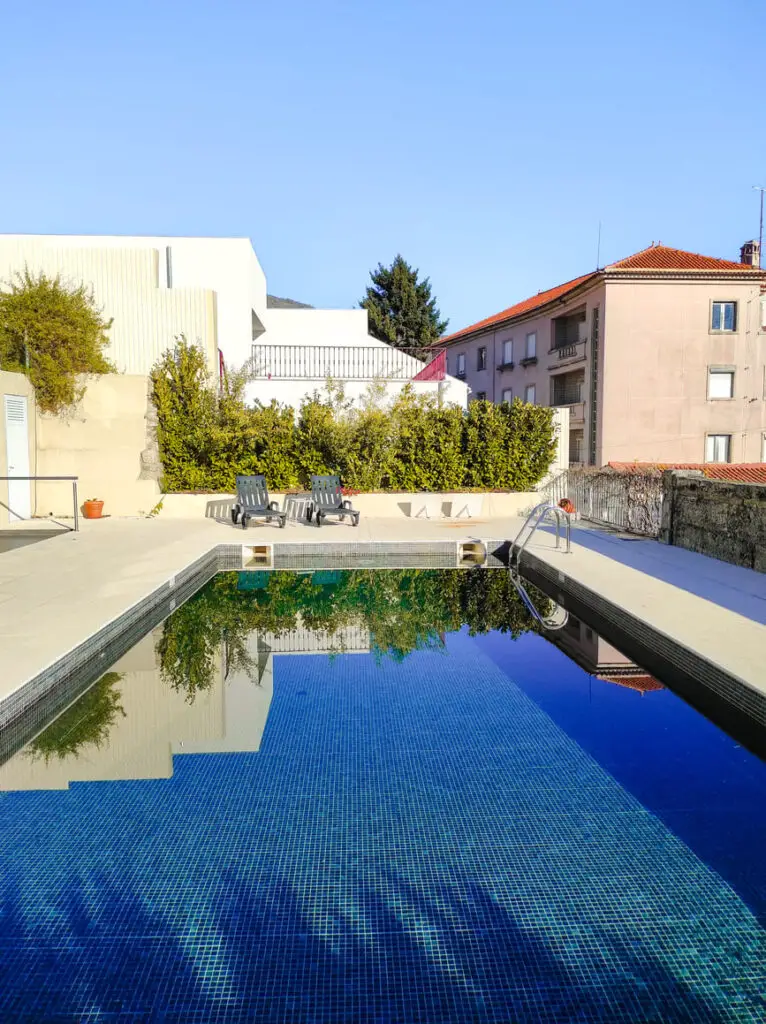
There is an outdoor area with a small bar where they serve cocktails in the summer and a swimming pool. As I was only there in the winter, I didn’t get to enjoy this part of the accommodation, but it seemed very interesting for the warmer months.
However, there are other excellent accommodation options in Covilhã. I’ll share some of my favourites:
Map of Covilhã – What to Visit
Before I tell you about the best places to visit in Covilhã, I’ll share a map with the main points of interest in the city and the surrounding area.
What to visit in Covilhã – 1-day itinerary
» Igreja de Santa Maria Maior (Santa Maria Maior Church)
I suggest starting this Covilhã itinerary in the heart of the historic centre, in one of Covilhã’s main churches. The blue and white tiles lining its exterior are well worth looking at, as they are beautiful and depict the life of the Virgin Mary.
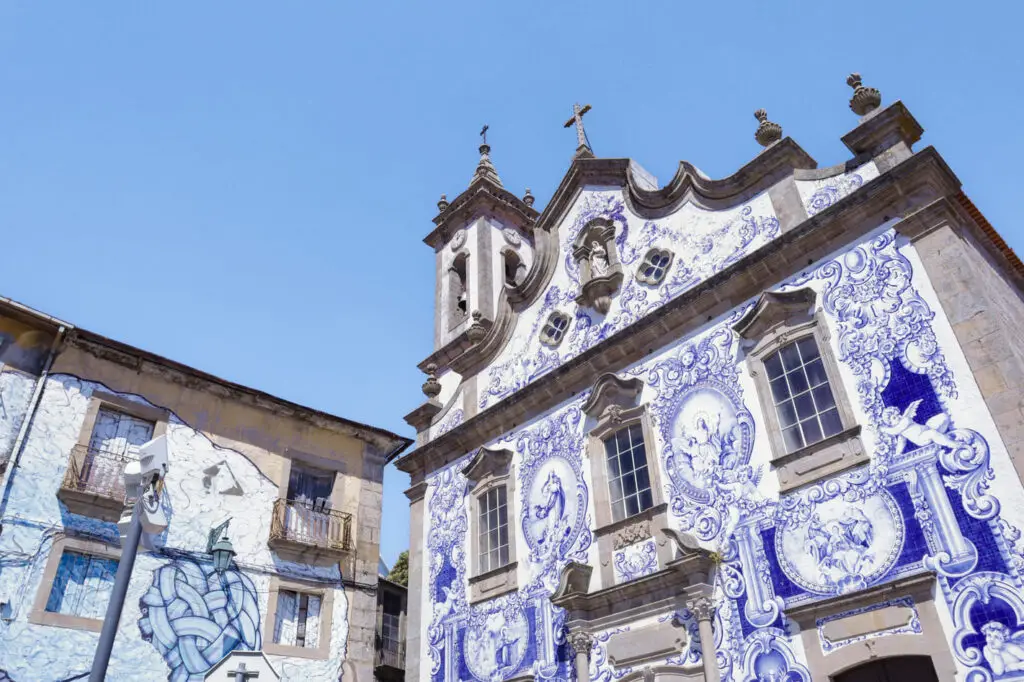
The church was probably built in the 16th century and has since undergone some alterations, making it a Baroque-style church. It’s a place not to be missed in Covilhã!
» Portas do Sol Viewpoint
Follow the deserted streets and alleys until you reach the Portas do Sol viewpoint. From here, you’ll find one of the best views of the city and its surrounding landscapes, such as Serra da Gardunha.
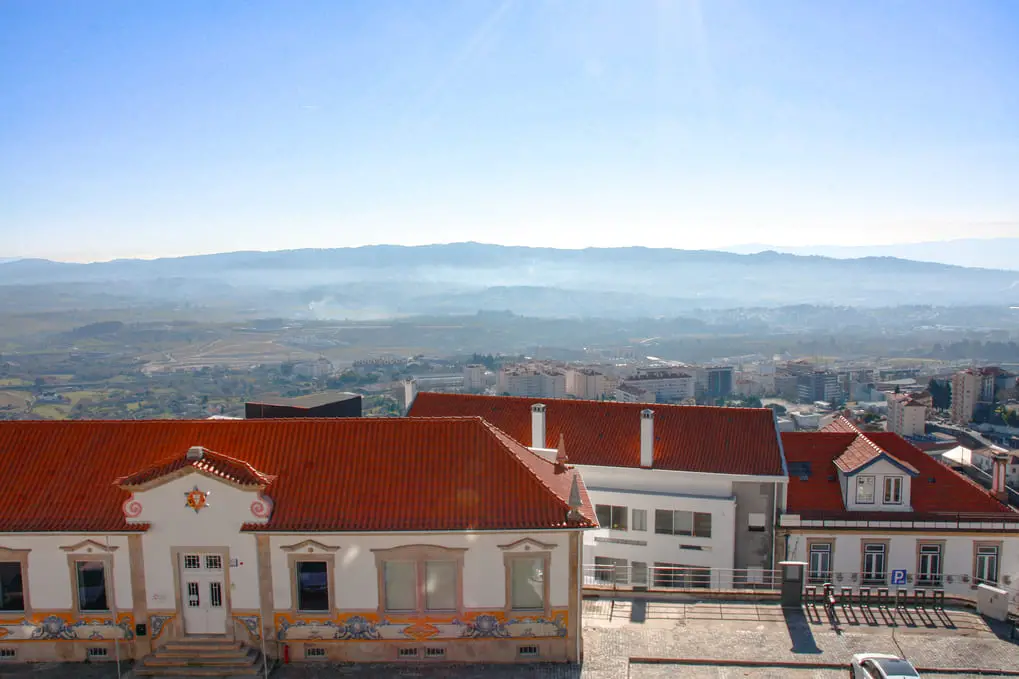
Take advantage of your visit to this Covilhã attraction to take a look at the Covilhã sundial and also one of the most popular street art murals in Covilhã (keep reading to find out more about the street art pieces in Covilhã).
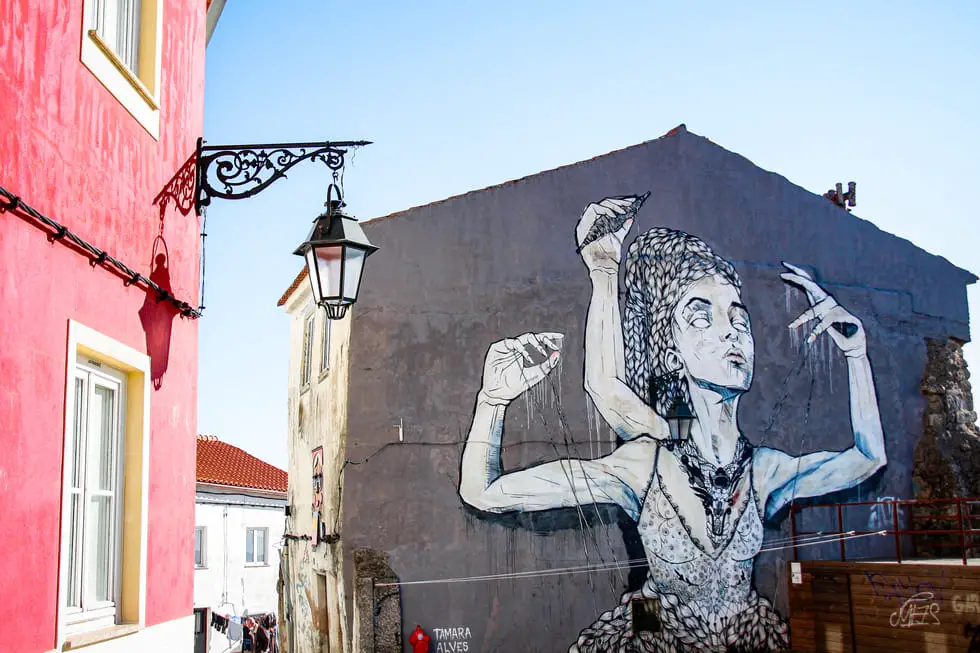

💡 EXTRA TIP: The most interesting murals near the Portas do Sul viewpoint include numbers 9, 12 and 14 from the WOOL | Covilhã Urban Art Festival.
» Praça do Município (Town Square)
Head down to the busiest part of Covilhã and visit Praça do Município, home to some of the city’s best-known buildings, such as the Town Hall, the Misericórdia da Covilhã Church and the Covilhã Municipal Theatre.
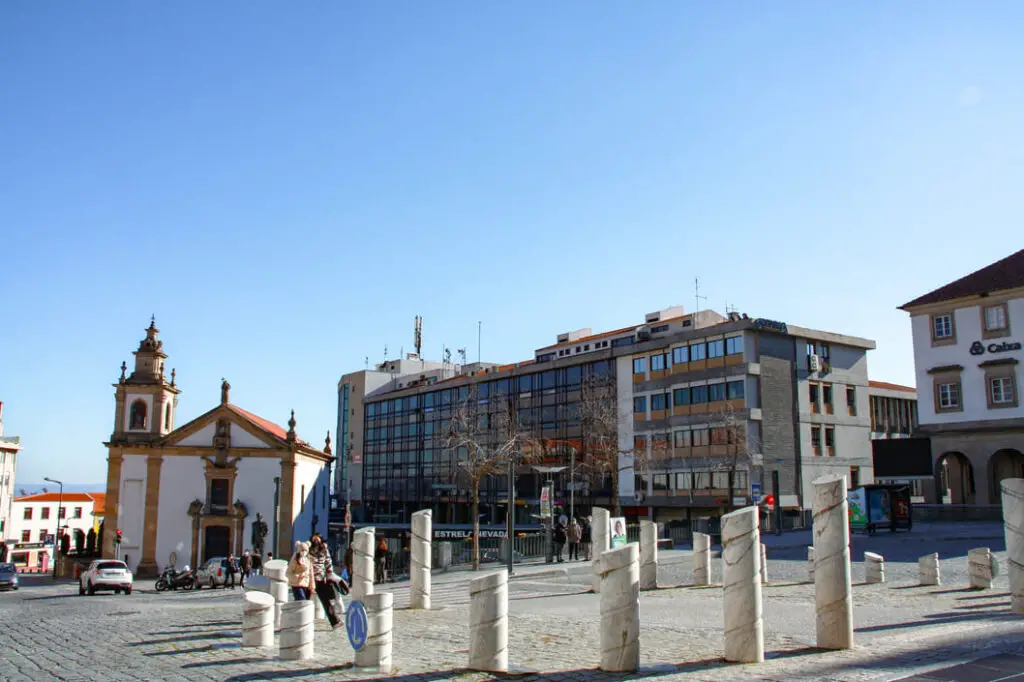
Don’t forget to admire the statue of Pêro da Covilhã, located in front of the town hall. This man is one of the most illustrious figures born in this Portuguese city, as he was sent by King John II of Portugal to India and Ethiopia in the 15th century to learn more about the spice trade routes.
💡 EXTRA TIP: Next to Praça do Município, you can find one of the most beautiful murals on the Covilhã Urban Art Route – mural no. 18 from the WOOL | Covilhã Urban Art Festival.
At the back of Covilhã’s Town Hall, don’t forget to also have a look at the Janela Manuelina (Manueline Window) or the Cistern.
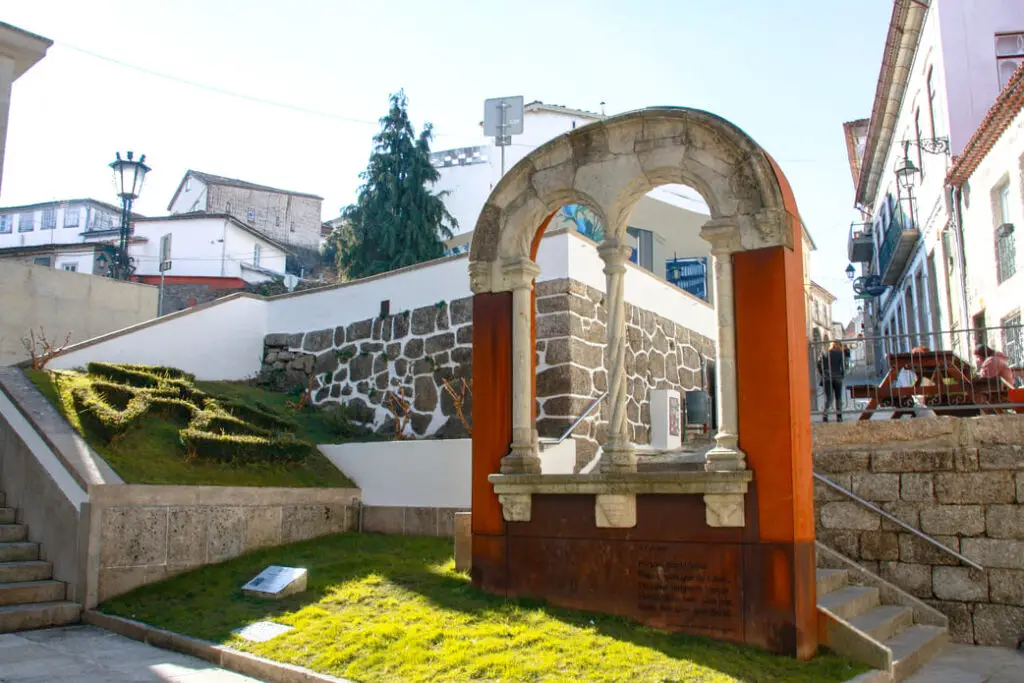
» Igreja da Misericórdia da Covilhã (Misericórdia da Covilhã Church)
In Praça do Município, pay special attention to the Misericórdia Church. The church dates back to the 16th century, but the current version was only built in the 18th century.
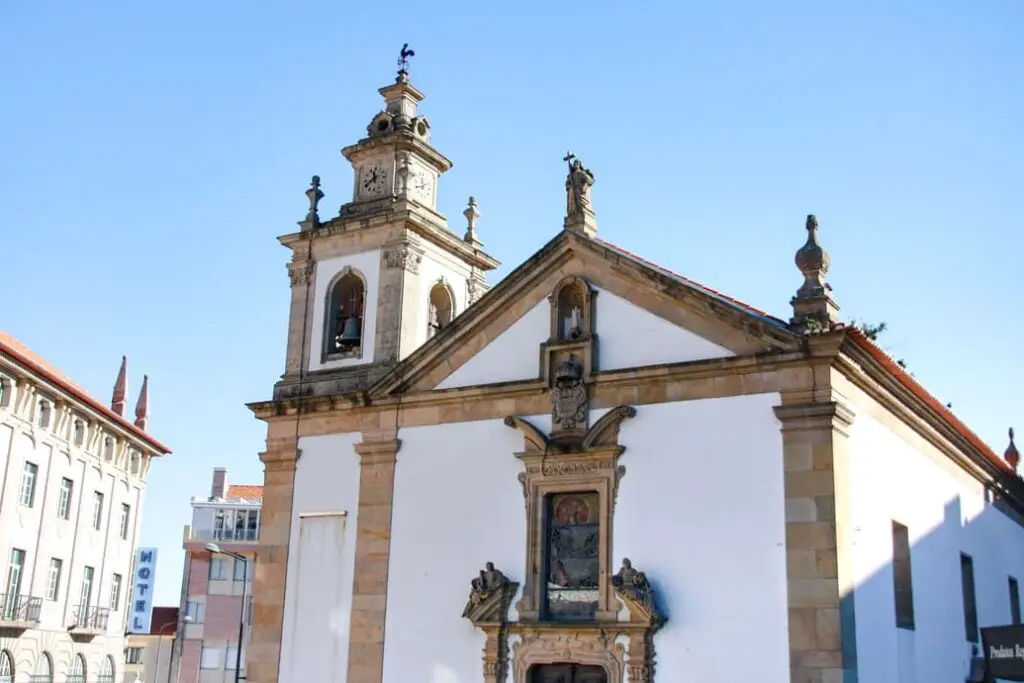
Unfortunately (and like almost all the churches I’ve been to on both my visits to Covilhã), the church was closed when I visited.
» Igreja de São Tiago (São Tiago Church)
Nearby, although more hidden, you can also look for Igreja de São Tiago – a church with a bell tower that can be seen from almost anywhere in the city.
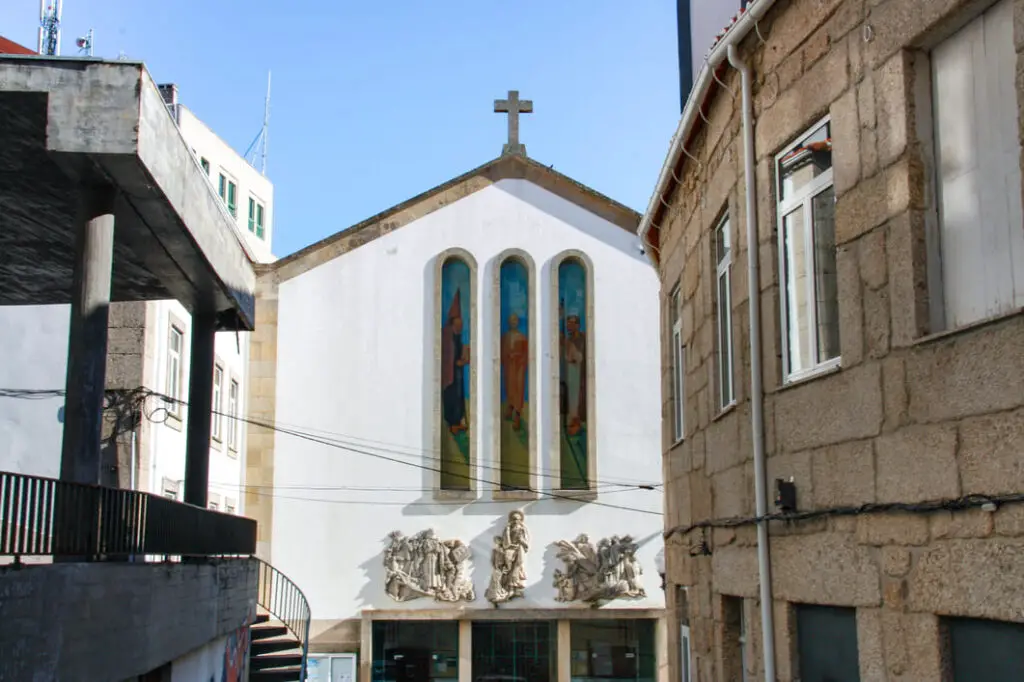
» Igreja de Nossa Senhora da Conceição (Nossa Senhora da Conceição Church)
Continue towards one of the city’s most pleasant areas and take the opportunity to admire Nossa Senhora da Conceição Church. This church belongs to the former Convent of St Francis, built in the 16th century.

However, its current external appearance has undergone some alterations through the years, with only the original Gothic portal remaining.
» Museum of Sacred Art
The former residence of Maria José Alçada and resulting from a partnership between the Covilhã City Council and the Covilhã Archpriesthood, the Museum of Sacred Art can be a good addition to this itinerary if you enjoy sacred art.
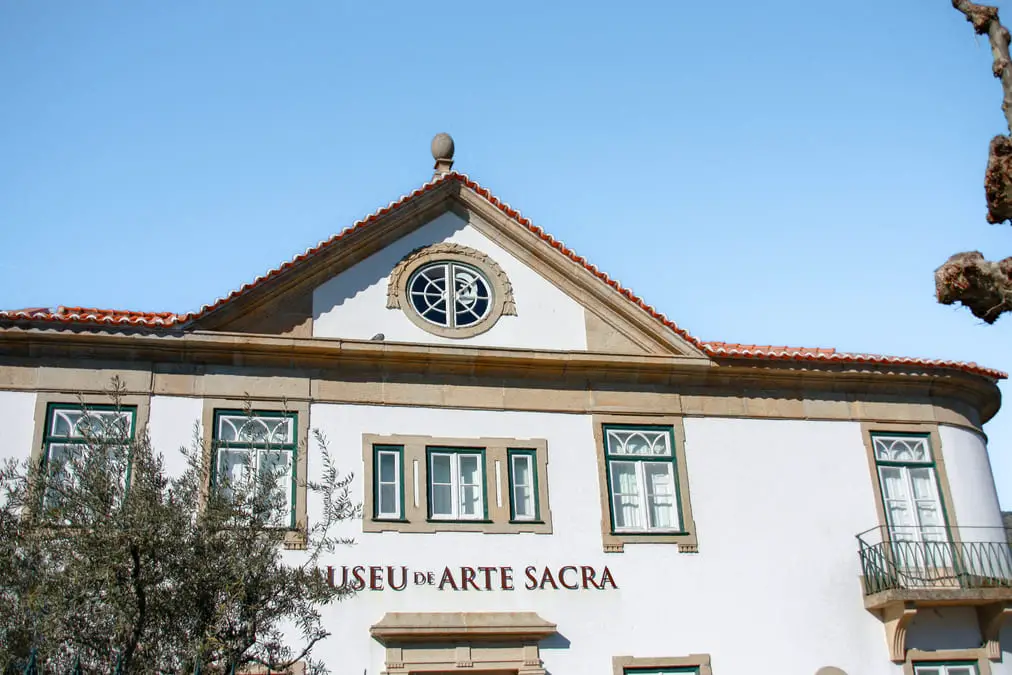
Inside the museum, you can see collections of paintings, sculptures and jewellery, among others.
📝 USEFUL INFORMATION: Covilhã’s Museum of Sacred Art is free to enter and includes a guided tour (although you have to book it beforehand). It is open from Tuesday to Sunday from 10 am to 6 pm. I suggest you check the most up-to-date information here.
» Jardim Público (Public Garden)
The area around the Museum of Sacred Art and Nossa Senhora da Conceição Church is one of the city’s main green spaces and one of the most pleasant – Jardim Público.
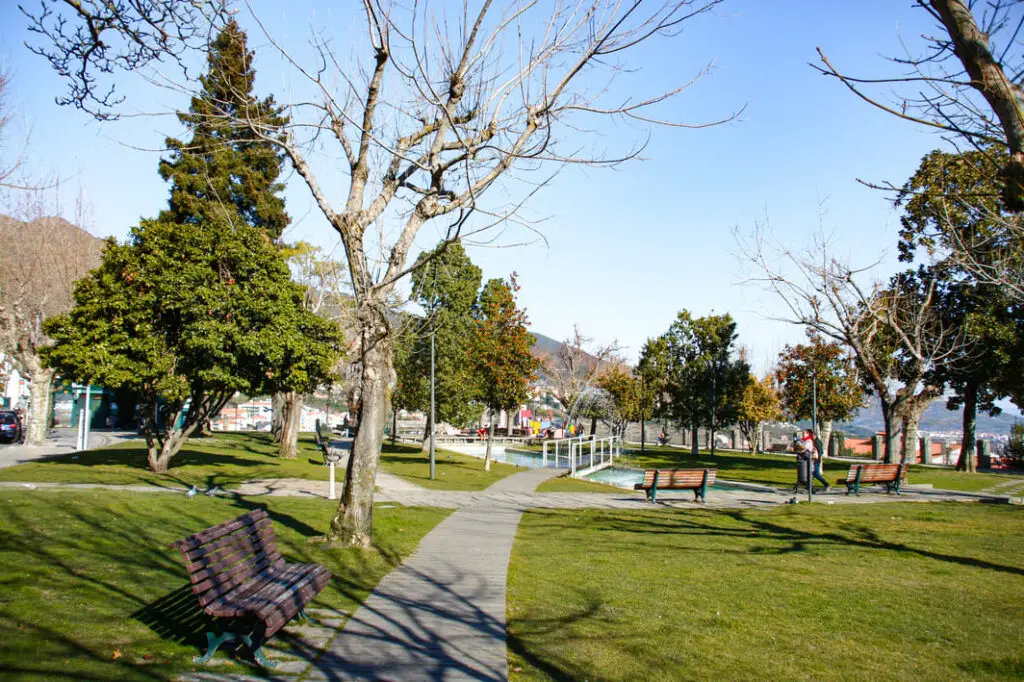
If the weather is good, this is the ideal place to rest for a while and have a drink, for example. You can also enjoy unforgettable views of the city, the Zêzere River valley and Serra da Estrela 🥰.
💡 EXTRA TIP: Take advantage of your visit to Jardim Público to see the street art murals number 25 and 31 from the WOOL | Covilhã Urban Art Festival.
» Ribeira da Carpinteira Bridge
It is also from Jardim Público that you have the best opportunities to photograph the Ribeira da Carpinteira Bridge. There is a free elevator that takes you down to this pedestrian bridge. However, when I visited, it wasn’t working.
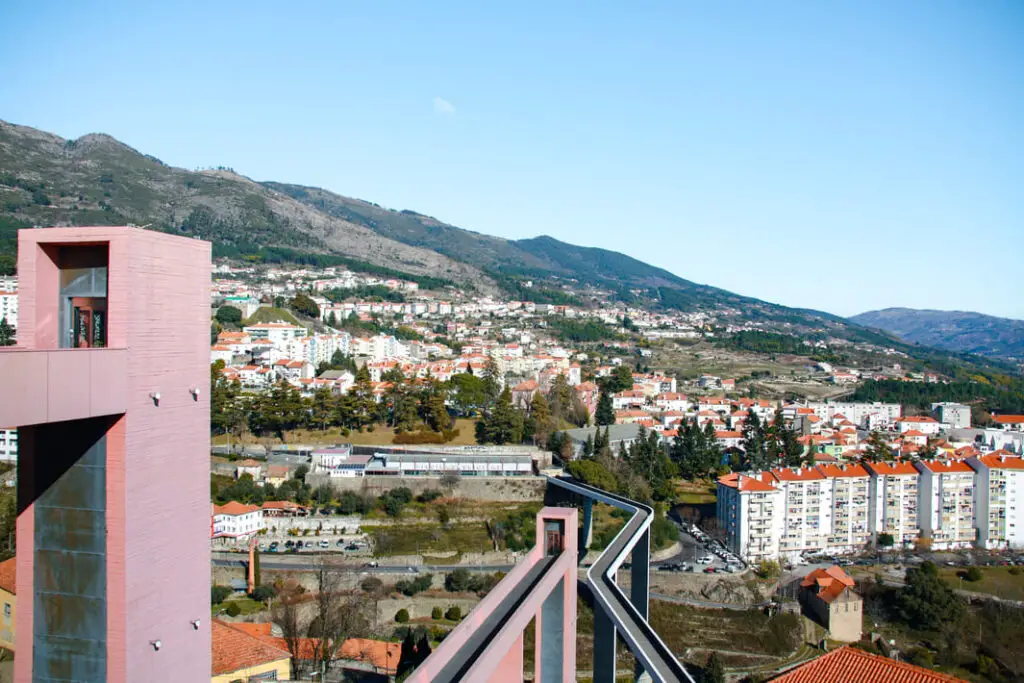
» Street art Murals
One thing that proves how modern Covilhã become in recent years is all the street art murals that we come across as we walk the city streets. These murals are the result of the urban art festival – WOOL (Festival de Arte Urbana da Covilhã).
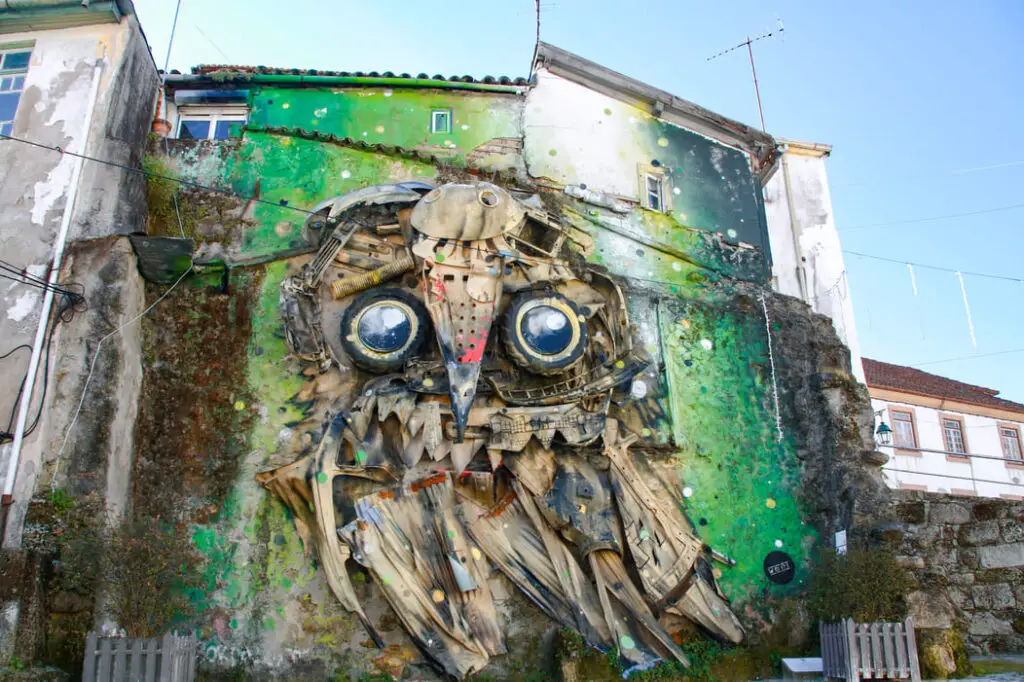
Featuring artists of various nationalities, one of the main aims of this project, which began in 2011, was to rehabilitate the city’s historic centre and, consequently, boost the city’s most run-down areas. The truth is that the streets have become very colourful and this is now an attraction that brings more tourists to the city.
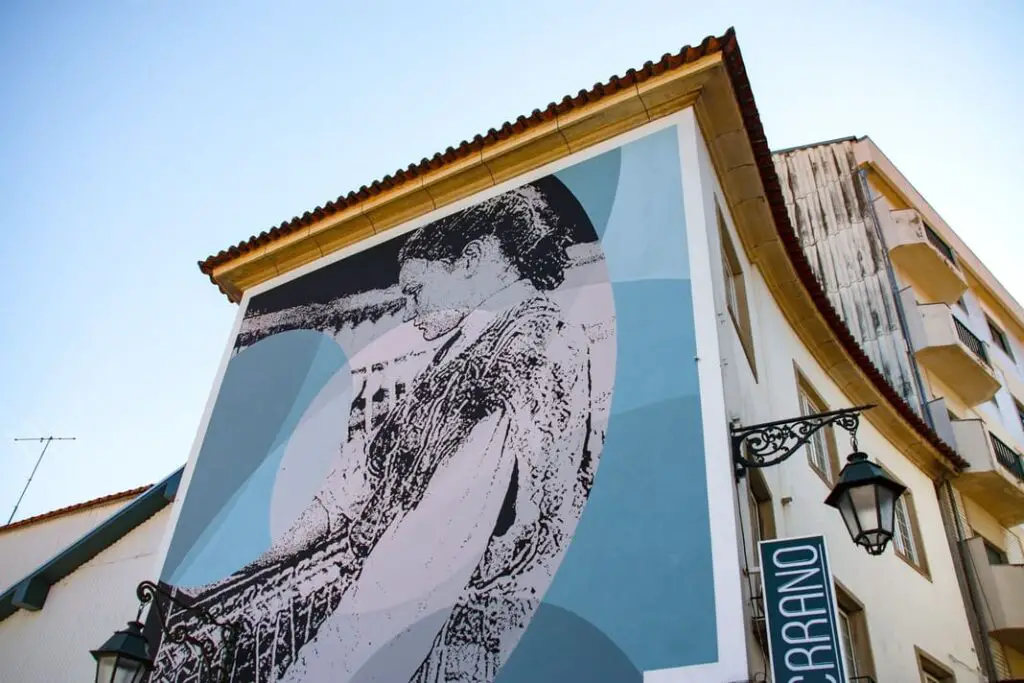
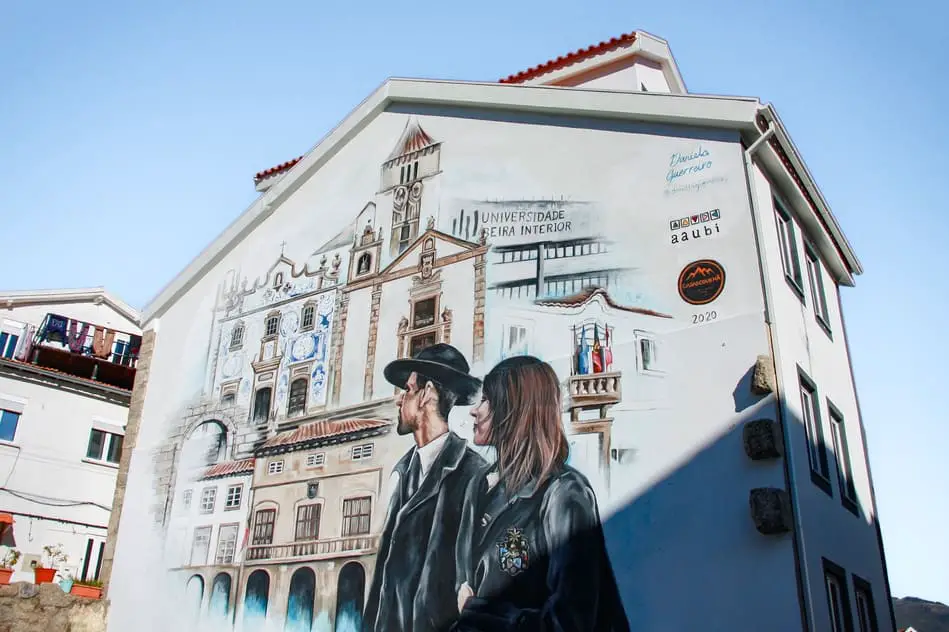
Personally, one of the best ways to enjoy these street art pieces is to discover them as you visit the rest of the city. However, some pieces are more interesting and, as such, it might make sense to see which ones exist and choose a few in particular to visit.

This Urban Art Route was one of my favourite parts of visiting Covilhã. It’s a real open-air museum! You can check out the location of the various murals here. Please note that some of the murals have changed over the years.
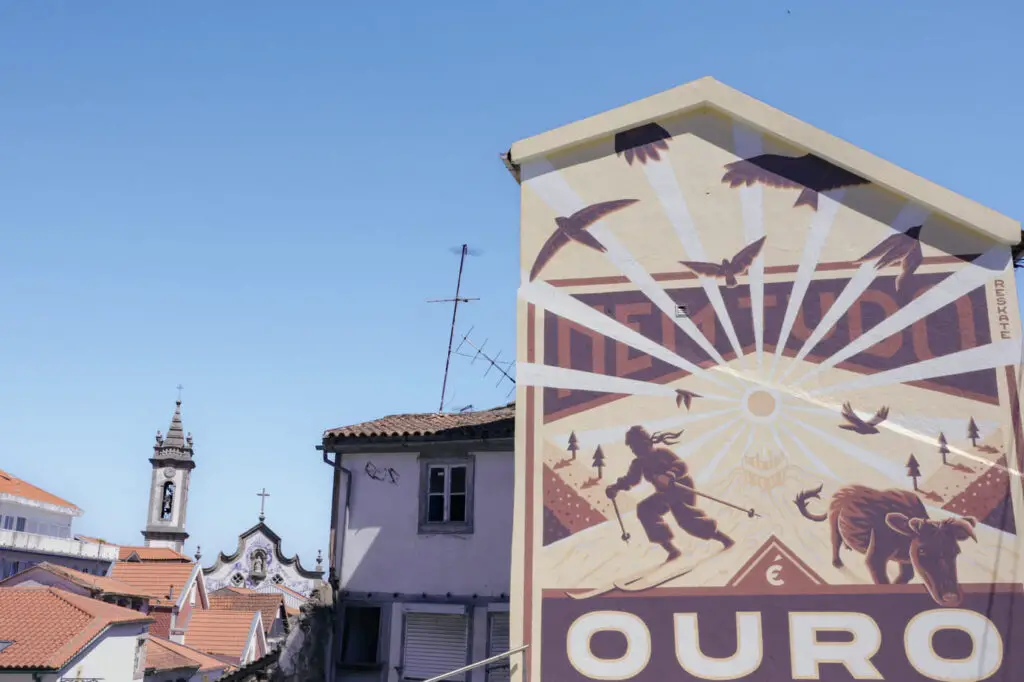

Some of my favourite murals were these:
- Mural #7 – Bordalo II (2014): Owl Eyes
- Mural #9 – Tamara Alves (2014): Orfão Selvagem
- Mural #12 – Samina (2015)
- Mural #18 – Third (2017): Coração
» Jardim do Lago (Lake Garden)
If you have some time to spare and like parks, I also recommend visiting Jardim do Lago. It’s a bit further away from the historic centre of Covilhã, but it’s a large and pleasant space. In summer, this is a favourite spot for locals to cool off in Piscina da Praia da Covilhã (beach pool).
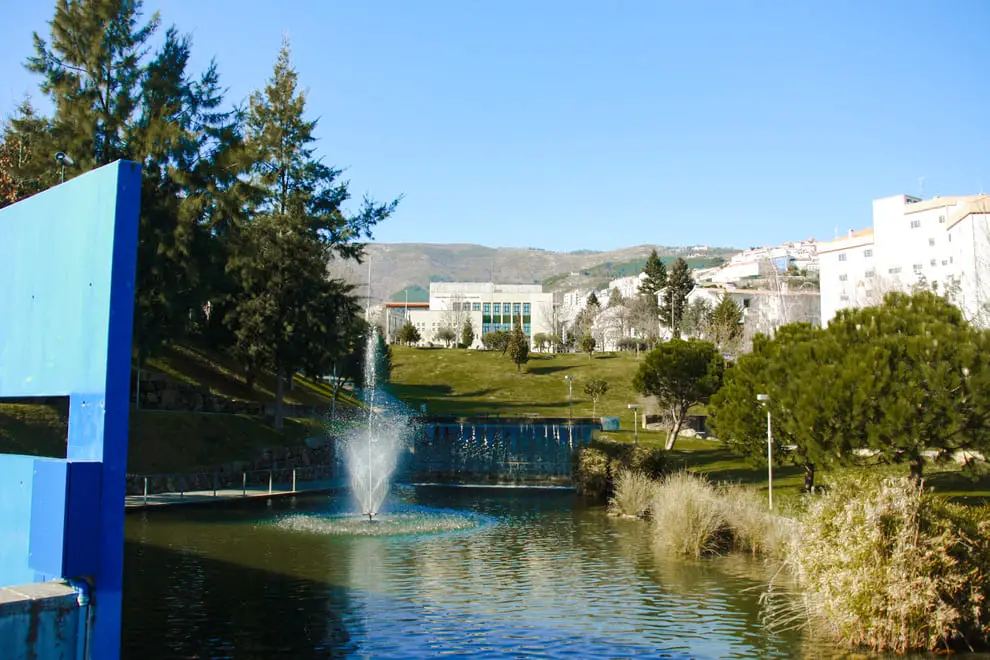
» Museu de Lanifícios (Wool Museum)
Covilhã was one of Portugal’s main wool producers and, although the industry has since declined in the region, it remains part of the city’s history.
There were once hundreds of companies that transformed wool into fabrics, but the arrival of cheaper foreign fabrics eventually led to the devaluation of this economic activity in the region.
However, given the importance of woollen fabrics in the region, the Covilhã Wool Museum is one of the places that best tells this particular story of Covilhã. The Museum is situated in different locations, namely Real Fábrica de Panos and Real Fábrica Veiga.
📝 USEFUL INFORMATION: The different locations of the Covilhã Wool Museum have different opening hours. Prices also vary, but you can visit Real Fábrica Veiga and Real Fábrica de Panos for 6€. You can find all the information on the official website to better plan your visit.
What to visit near Covilhã
Given Covilhã’s strategic location next to Serra da Estrela Natural Park, there is no shortage of beautiful places to visit in the vicinity of this Portuguese city. A visit of one or two days can quickly turn into a whole week if you want it to.
That’s why I will share some suggestions for places relatively close to Covilhã that you can also include in your itinerary.
Varanda dos Carqueijais Viewpoint
What is probably one of the most famous viewpoints in Serra da Estrela is merely a 10-minute drive (5 km) from the centre of Covilhã. The viewpoint has enviable views over Serra da Estrela and a metal structure that, depending on the perspective, is very photogenic.

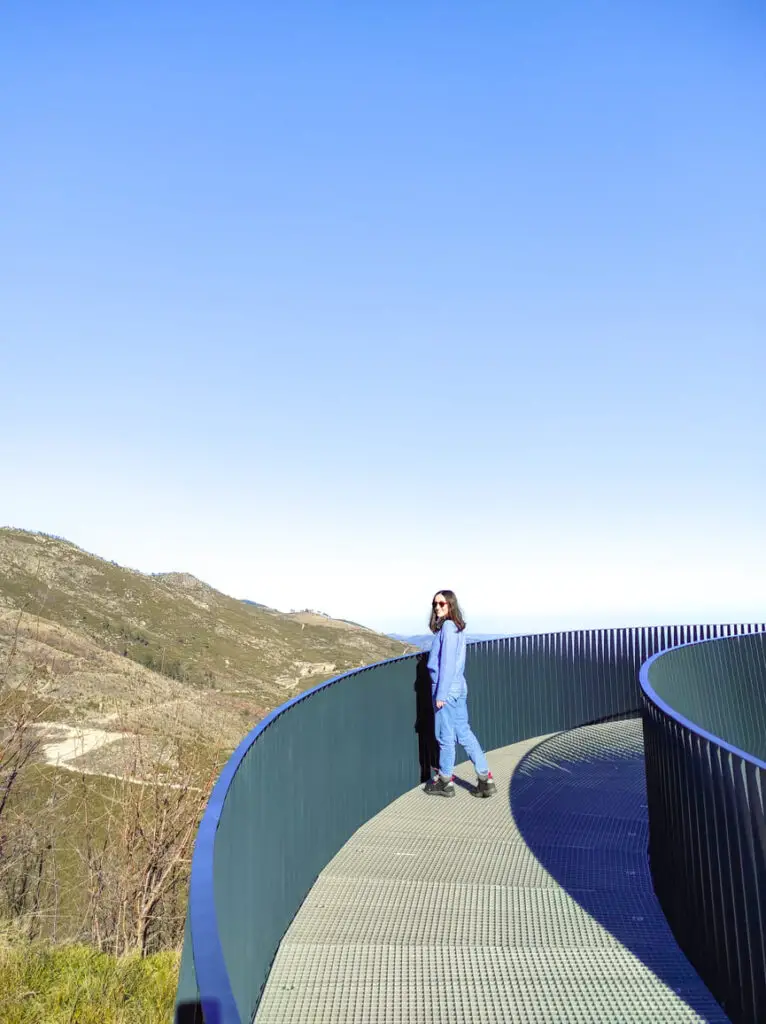
Torre
One of the main landmarks in Serra da Estrela is Torre – the highest point in mainland Portugal. And it is just a 30-minute drive (20 km) from Covilhã. At an altitude of almost 2.000 metres, this is where almost all tourists head in search of snow when visiting Serra da Estrela. What’s more, it’s the only place in Portugal with a natural ski resort. You have to make the most of it! It’s especially beautiful if it’s snowing.
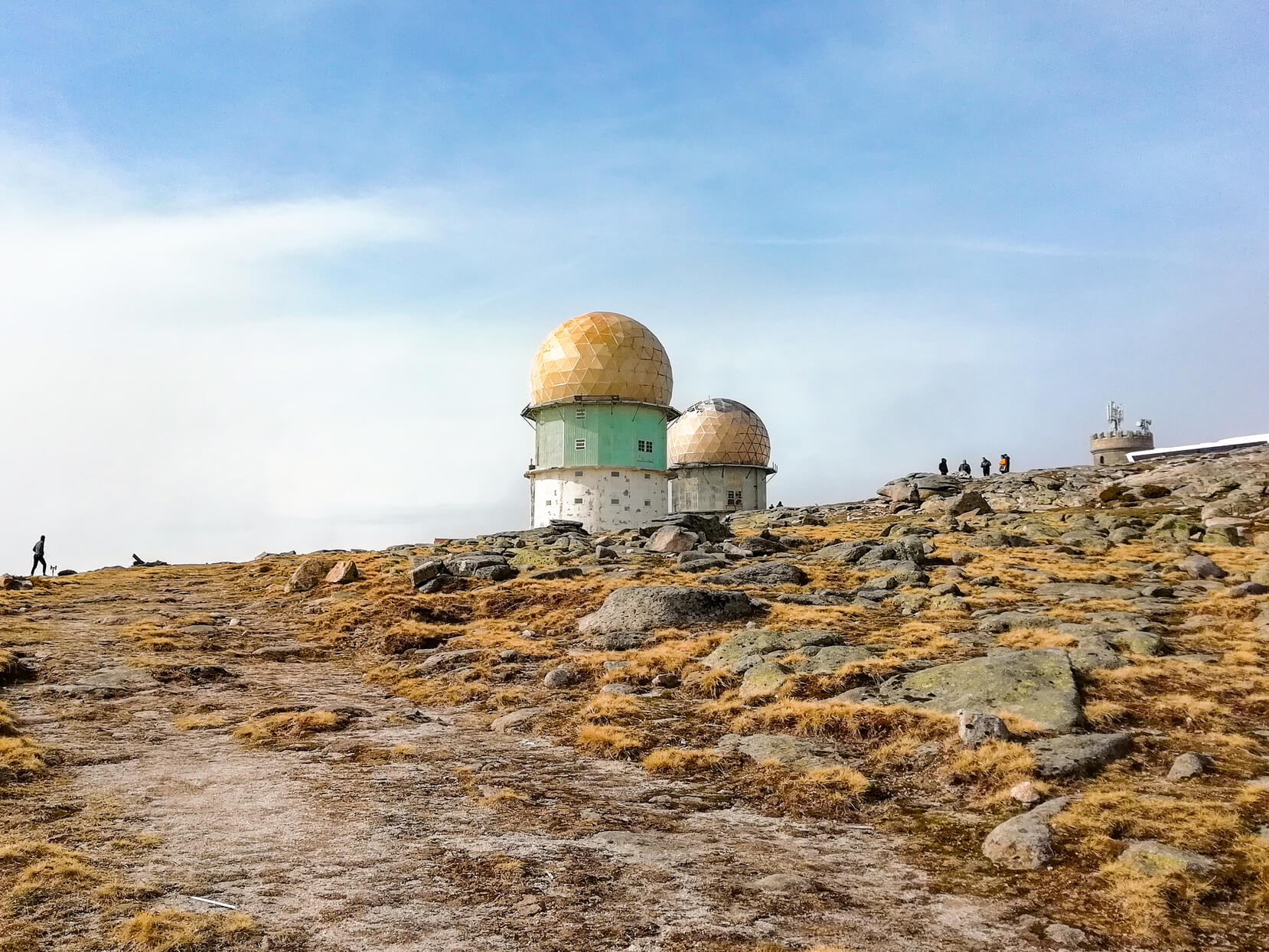
Unhais da Serra River Beach
Also just a 30-minute drive from Covilhã is the beautiful and idyllic river beach of Unhais da Serra. In addition to its beauty, this beach has great facilities. An excellent option for cooling off on hot days!
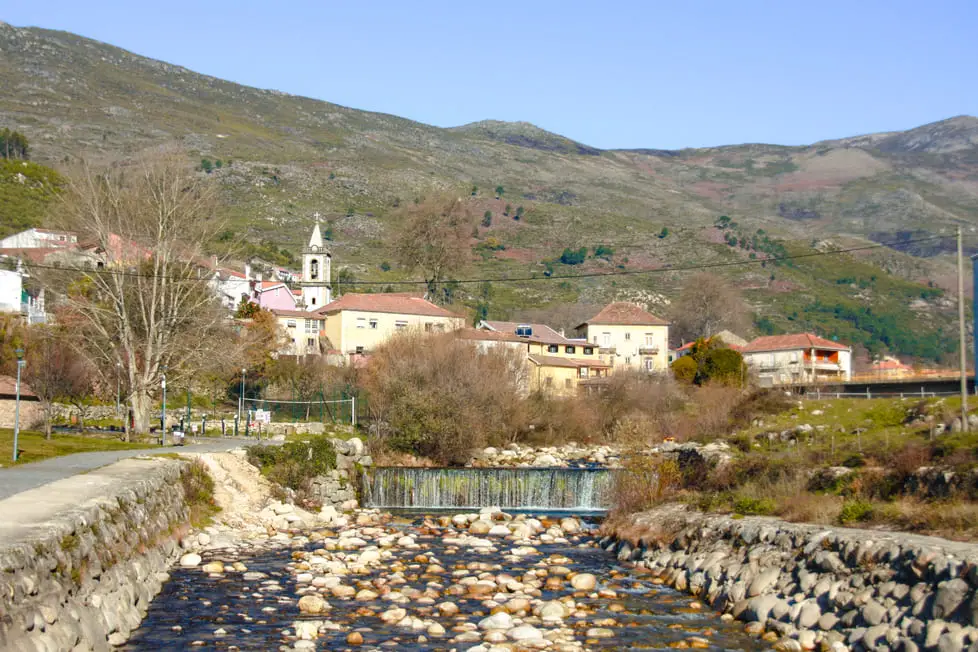
Covão d’Ametade
If you like places that look like they’re straight out of a fairy tale, then you can’t miss Covão d’Ametade. It’s one of the most beautiful places in the whole of Serra da Estrela and it’s beautiful in any season, whether it’s snowing or not! Trust me, this is one of those places that’s well worth it 😍!

Loriga River Beach
A bit further away from Covilhã (but still close enough to visit on a day trip), you have the river beach of Loriga, which is one of my favourites in Serra da Estrela. It has beautiful green surroundings and is very photogenic.
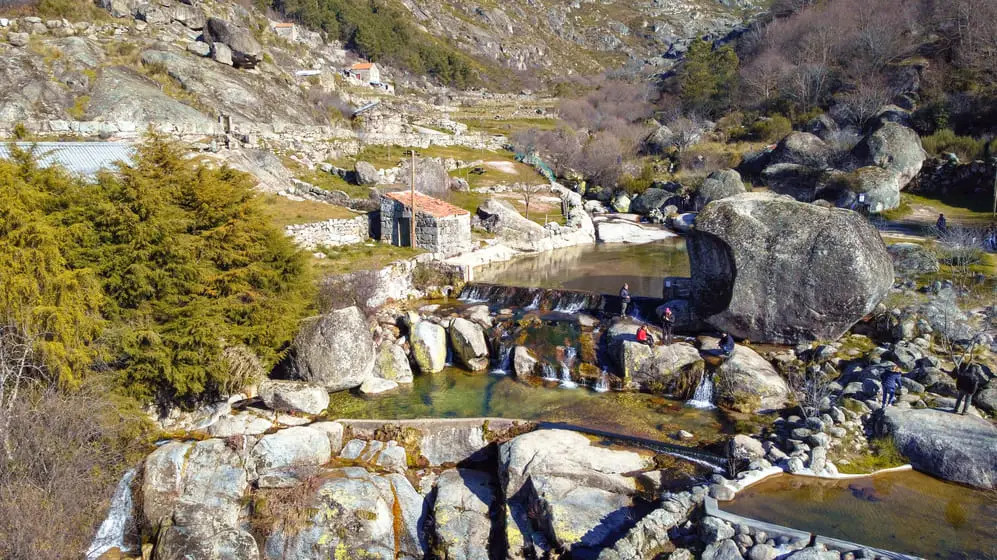
The water is quite cold, but even that doesn’t stop the bravest from taking a dip in the warmer months.
Radium Thermal Baths
If you’re like me and sometimes like to visit more “obscure” places that leave you wondering what life would have been like there a few years ago, then be sure to visit one of the most bizarre places in this region of Portugal – Termas Rádium.

Radium Thermal Baths are a former spa and hotel that are now completely abandoned. The thermal baths used radium-containing water from a nearby mine, which was thought to have good health properties. However, when the harmful effects of radioactivity were discovered, the end of the spa and hotel quickly followed.
Today, only the ruins remain of a place that once caused a buzz in the region and which came to a sad end. Visiting this place is as magical as it is frightening.
Sortelha
One of Portugal’s 12 Historic Villages is only a 40-minute drive from Covilhã. I know it’s no longer in the heart of the Serra da Estrela, but the village is so beautiful that I decided to include it in this list of places to visit near Covilhã.
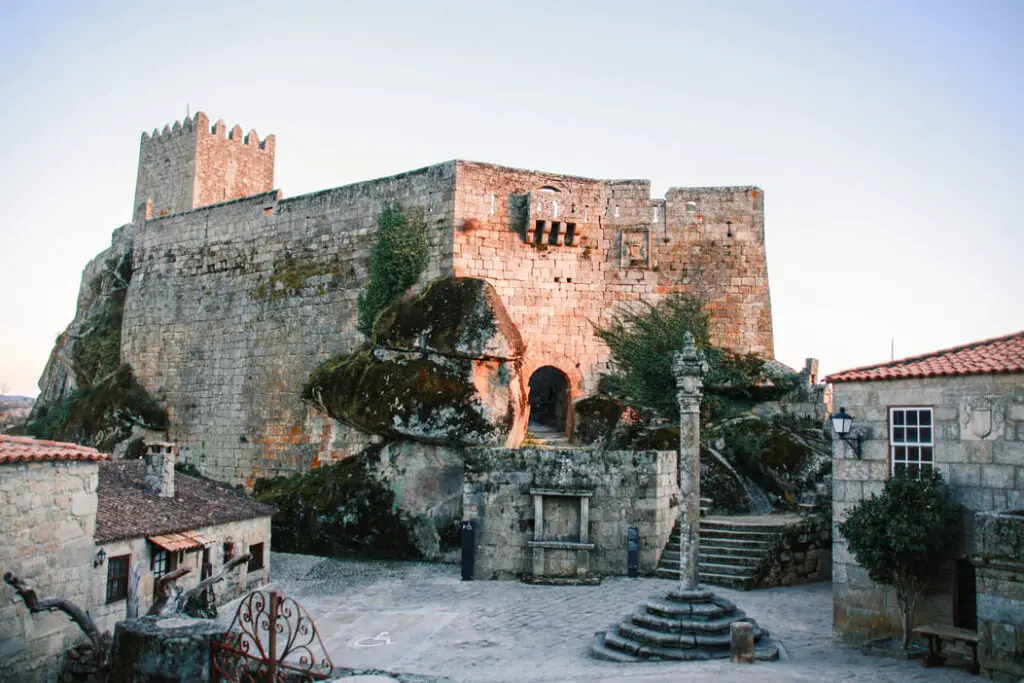
The village is quite small, so you can visit it very quickly. But there is something that will make you want to stay longer. There are still some points of interest in Sortelha, but my suggestion is that you let yourself get lost in its streets.
Belmonte
Belmonte is also another excellent option to visit on the outskirts of Covilhã. Another of Portugal’s Historic Villages that is well worth a visit, especially for its old Jewish quarter.
Lagoa Comprida
On clear days, you can always visit Lagoa Comprida, the best-known lake in Serra da Estrela. This is an ancient glacier that ended up expanding after the construction of a dam. This is also where the famous Covão dos Conchos (look it up and you’ll be surprised) is located, which seems to transport you to the ends of the earth.
Restaurants in Covilhã
I’m sure you won’t be surprised if I tell you that Covilhã offers excellent gastronomy. There are two restaurants that I particularly enjoy and I’ll recommend.


First of all, I’m talking about the restaurant Varanda da Estrela (even though it’s technically in Penhas da Saúde). The place is very cosy (especially in winter) and the food is delicious. Although Arroz de Zimbro is one of the most famous dishes, I especially enjoyed the pork cheek. I recommend booking a table as it’s one of the most popular restaurants in the area.

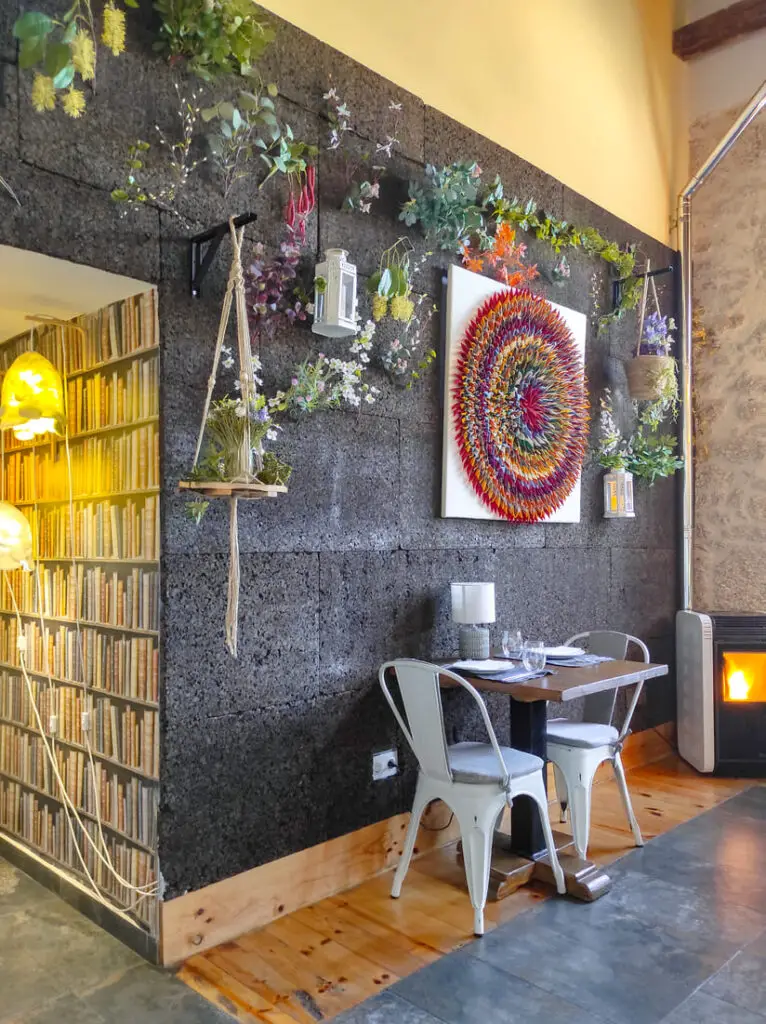
Then, if you’re looking for a more gourmet experience, I suggest the restaurant Alkimya, in the historic centre of Covilhã. The space is very pretty, the food is excellently presented (and, consequently, the prices are a little higher), but the quality and taste are undeniable.
Finally, although I haven’t tried it myself (yet!), I’ve heard great feedback about Lenda Viriato as well.
Disclaimer: this post may contain some affiliate links, which means I get a small commission if you buy something through my links. This doesn’t represent any additional cost to you and you’ll be supporting my work here on the blog😊


